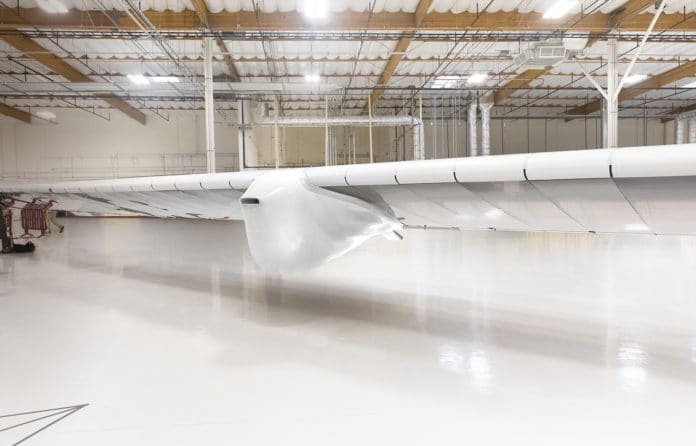Loon is the project controlled by Google-Alphabet that aims to offer an alternative for Internet connection in remote areas through a network made up of balloons deployed in the stratosphere, more than 19,000 meters high. The technology has been tested in different areas like in Kenya and the Amazon region.
But now, Google wants to get a step further by adopting the same technology to a drone. Alphabet’s Loon is working on a stratospheric glider, dubbed as HAWK30, in conjunction with Softbank’s HAPSMobile as part of a long-term strategic partnership. It is designed to fly through the stratosphere, where it can reach speeds above 100 km/h (62 mph) and carry the Internet of up to 1 Gbps at a distance of up to 700 kilometers (435 miles).
In April, the Japanese group Softbank invested $125 million in the Alphabet subsidiary for the joint development of HAPSMobile drones, which set the same task of providing remote regions of the world with high-speed Internet.
Now the partners have announced that they have successfully developed and tested communication equipment for the HAPSMobile HAWK30 unmanned aircraft system. The system performs solar-powered flights in the stratosphere (from 11 to 50 km), where the temperature can drop to -90 degrees celsius.

The engineers had to make some changes to the antennas of the LTE system onboard, allowing them to rotate faster to maintain a stable connection. This is due to the speed of the glider, which is much higher than that of balloons. It was also necessary to create an aerodynamic body to protect the antenna. In addition, the advanced equipment uses a specially developed LTE system, which operates in different frequency bands that meet the 3GPP specifications. Thanks to this, the HAWK30 will be able to provide LTE connectivity to smartphones and other devices.
“In combination with the millimeter-wave communication system, the Loon payload is able to serve the internet to a large number of smartphone users at a long distance from existing ground infrastructure,” the company said.
While announcing their partnership last year, Loon and HAPSMobile said that through the introduction of such technologies, people would be reachable in areas where there is no connection; for instance, in mountainous areas, on remote islands, and in developing countries.
At the moment, it is not known whether it is only a test or if there is a launch of a commercial technology-based product. But taking into account the latest reports, most likely, such news may follow in the near future.
